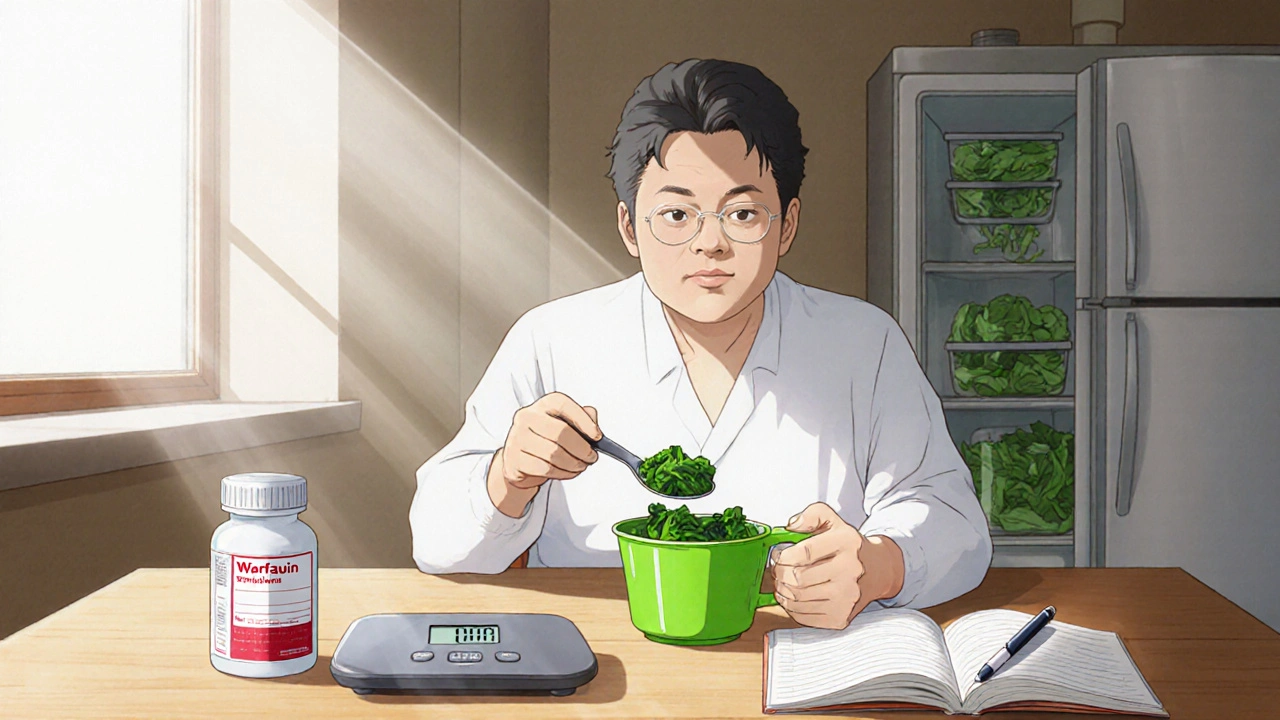
Warfarin Diet Guide: Keep Vitamin K Foods Consistent for Stable INR
Learn how to keep your warfarin therapy stable by eating consistent amounts of vitamin K foods, tracking meals, and working with your healthcare team.
Read MoreWhen you're on warfarin, a blood thinner used to prevent dangerous clots. Also known as Coumadin, it works by blocking vitamin K’s role in clotting. But here’s the catch: what you eat can make it work too well—or not well enough. A sudden change in vitamin K intake can throw off your INR levels, which your doctor checks to make sure you’re in the safe zone. This isn’t about being perfect—it’s about being consistent.
Vitamin K, a nutrient your body uses to make clotting factors is the main player here. Leafy greens like kale, spinach, and broccoli are packed with it. So are Brussels sprouts, cabbage, and green tea. If you normally eat a salad every day and suddenly stop, your INR might spike. Same if you start eating huge amounts of these foods after avoiding them. It’s not about cutting them out—it’s about keeping your intake steady. Your body adjusts to the level you give it. A sudden drop or jump? That’s when the risk of bleeding or clotting goes up.
INR levels, the measure of how long it takes your blood to clot are your real-time feedback system. Most people on warfarin aim for an INR between 2 and 3. If it’s too low, clots can form. Too high, and you risk bleeding inside your body—like a brain bleed or stomach bleed. That’s why doctors don’t just check your INR once and forget it. They want to see trends. And your diet? It’s one of the biggest reasons those numbers bounce around. Alcohol, cranberry juice, and even some herbal supplements like garlic or ginseng can interfere too. You don’t have to avoid them entirely, but you need to know how they affect you.
There’s no magic warfarin diet plan. You don’t need to buy special foods or follow a rigid meal schedule. What works is routine. Eat your usual portions of greens, keep your alcohol steady, and tell your doctor about any new supplements—even if they’re "natural." If you’re going on vacation, eating out more, or recovering from illness, your intake might shift. That’s when you should check in with your provider. Small, consistent habits beat big, temporary changes every time.
The posts below give you real-world examples of how other people manage this balance. You’ll find comparisons between warfarin and other blood thinners, tips on reading food labels for hidden vitamin K, and how to handle missed doses without panic. No fluff. Just what actually works when you’re trying to stay safe and feel normal.

Learn how to keep your warfarin therapy stable by eating consistent amounts of vitamin K foods, tracking meals, and working with your healthcare team.
Read More